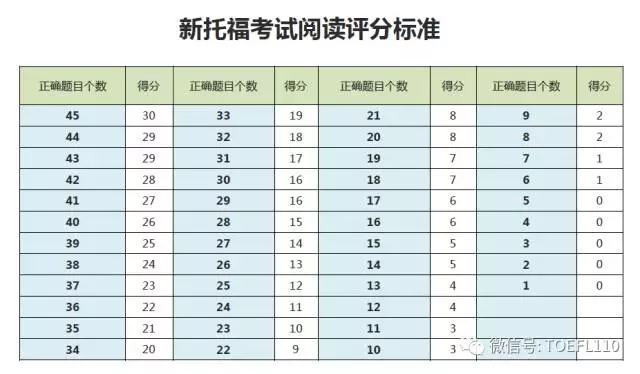托福阅读水平得分快速提升3大实用方法分享, 阅读突破25分这么练才靠谱。下面小编就和大家分享托福阅读水平得分快速提升3大实用方法分享 ,希望能够帮助到大家,快来学习一下吧。
托福阅读水平得分快速提升3大实用方法分享 阅读突破25分这么练才靠谱
高频词汇的整理
如果想要把自己的阅读速度提升,其中有一个最要的因素即为词汇。在大家备考托福过程中一个词汇也在经历不断累积的过程,而在积累词汇过程中考生要学着整理这些词汇,特别是针对那些最容易在阅读文章里出现的高频词汇一定要多做归纳整理,再针对这些词汇出现的语言环境提升掌握能力,如此一来大家对阅读词汇的了解也会提升。
提升句型和语法
大家在做托福练习的过程中能够感觉到许多语法内容知识点都已完全融入到了阅读和听力的一些题目中。想要应对好这些题目,最关键的是好句子的结构分析。提升句子结构,就是指将主谓宾结构部分和定状补修饰成分准确把握。做到这一点看上去简单,但实际处理时却仍有一定难度。特别是当考生处理一些长难句复杂句时,如何完全分析出句型结构也需要针对练习,而阅读速度则能在这些练习中获得提升。
快速阅读的方法
在阅读的过程中大部分同学都会出现一个问题:自己在词汇和语法上都是有基础的,但想要提升阅读速度却会变得一场困难。假如你也有这种问题,那么小编建议你可以去调整一下自己的阅读方法了。大多数考生在阅读时,都有先看完文章完全理解后再开始答题的习惯,而这种做法很容易造成考试时间的紧张。在此小编需要提醒大家,托福考试作为一门语言考试,考察最重要的还是大家的答题能力,而不是阅读能力。所以,考生不需要清晰地把全文的每一个细节都彻底了解。小编建议大家的阅读理解方式是,首先仔细阅读文章段落的第1、2句,把握住段落主旨大意,然后快速浏览其余部分。通过这样的方式阅读,既能加快阅读速度,又能让大家对文章的结构思路更有把握。
托福阅读真题原题+题目
Glaciers are large masses of ice on land that show evidence of past or present movement. They grow by the gradual transformation of snow into glacier ice.
A fresh snowfall is a fluffy mass of loosely packed snowflakes, small delicate ice crystals grown in the atmosphere. As the snow ages on the ground for weeks or months, the crystals shrink and become more compact, and the whole mass becomes squeezed together into a more dense form, granular snow. As new snow falls and buries the older snow, the layers of granular snow further compact to form firm, a much denser kind of snow, usually a year or more old, which has little pore space. Further burial and slow cementation — a process by which crystals become bound together in a mosaic of intergrown ice crystals — finally produce solid glacial ice. In this process of recrystallization, the growth of new crystals at the expense of old ones, the percentage of air is reduced from about 90 percent for snowflakes to less than 20 percent for glacier ice. The whole process may take as little as a few years, but more likely ten or twenty years or longer. The snow is usually many meters deep by the time the lower layers are converted into ice.
In cold glaciers those formed in the coldest regions of the Earth, the entire mass of ice is at temperatures below the melting point and no free water exists. In temperate glaciers, the ice is at the melting point at every pressure level within the glacier, and free water is present as small drops or as larger accumulations in tunnels within or beneath the ice.
Formation of a glacier is complete when ice has accumulated to a thickness (and thus weight) sufficient to make it move slowly under pressure, in much the same way that solid rock deep within the Earth can change shape without breaking. Once that point is reached, the ice flows downhill, either as a tongue of ice filling a valley or as thick ice cap that flows out in directions from the highest central area where the most snow accumulates. The trip down leads to the eventual melting of ice.
1. Which of the following does the passage mainly discuss?
(A) The effect of glaciers on climate
(B) Damage from glaciers
(C) Glacier formation
(D) The location of glaciers
2. Which of the following will cause density within the glacier to increase?
(A) Increased water and air content
(B) Pressure from the weight of new snow
(C) Long periods of darkness and temperature variations
(D) Movement of the glacier
3. The word bound in line 9 is closest in meaning to
(A) covered
(B) chosen
(C) planned
(D) held
4. Which of the following will be lost is a glacier forms?
(A) Air
(B) Pressure
(C) Weight
(D) Rocks
5. According to the passage , which of the following is the LEAST amount of time necessary for
glacial ice to form?
(A) several months
(B) several years
(C) at least fifty years
(D) a century
6. The word converted in line 15 is closest in meaning to
(A) changed
(B) delayed
(C) promoted
(D) dissolved
7. What is the purpose of the material in paragraph three?
(A) To define two types of glaciers
(B) To contrast glacier ice with non-glacier ice
(C) To present theories of glacier formation
(D) To discuss the similarities between glacial types
8. In temperate glaciers, where is water found?
(A) Only near the surface
(B) In pools of various depths
(C) In a thin layer below the firm
(D) In tunnels
9. The word it in line 21 refers to
(A) formation
(B) ice
(C) thickness
(D) weight
10. It can be inferred from the last paragraph that a glacier
(A) can revert to a fluffy mass
(B) maintains the same shape throughout the glacial process
(C) is too cold to be thoroughly studied
(D) can contribute water to lakes, rivers, or oceans
PASSAGE 74 CBDAB AADBD
托福阅读水平得分快速提升3大实用方法分享相关文章:
★ 英语口语
托福阅读水平得分快速提升3大实用方法分享
,希望能够帮助到大家,快来学习一下吧。托福阅读水平得分快速提升3大实用方法分享 阅读突破25分这么练才靠。下面小编给大家分享托福阅读水平得分快速提升3大实用方法分享,希望能帮助到大家。 托福阅读水平得分快速提升3大实用方法分享文档下载网址链接:
上一篇:托福阅读长难句太复杂完全看不懂
下一篇:托福阅读词汇有效积累3大方法讲解






